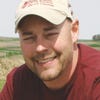May 13, 2022

Someone once said that in business, the only way to start at the top is to start digging a hole. My guess is it was some well digger’s apprentice with a wry sense of humor. Regardless of who came up with this wisdom, we’ve got a job for you, it involves a little digging, and it can pay handsomely.
Scouting soybeans (or corn) in our unpredictable weather isn’t at the top of everyone’s list of fun things to do, but it’s invariably worth the effort. There is always a long list of things to watch for, like weed escapes, insect pests and disease outbreaks.
Looking at how different genetics are progressing and performing, observing planter performance, checking terraces and waterways for repairs or weed issues, and evaluating soil issues like compaction or erosion are also part of a laundry list of what many track during scouting trips.
Public enemy No. 1
While we are out there sweating away looking at bean fields, we may as well dig a little deeper — literally, because that’s where we may (OK, probably will) find our biggest challenge. And what is this challenge, the most damaging pathogen of soybeans in Iowa, and across the U.S.? You likely guessed it already: Soybean public enemy No. 1 is the soybean cyst nematode.
As Iowa State University’s SCN expert Greg Tylka pointed out in an Integrated Crop Management news article, “Gaining ground in the battle against SCN starts with knowing the SCN situation in each field where soybeans are grown, and we can start the quest for knowledge by checking the roots of soybeans now.” His article is full of good information, and it can be found on ISU’s Integrated Crop Management website.
Fields infested with SCN may look healthy aboveground, but adult SCN females will be present on the roots of infected plants. To check for SCN on soybean roots, dig rather than pull roots from the soil, and gently shake the soil from the roots. If soil does not fall readily from the roots, break apart large clods of soil and crumble the soil away from the roots by hand. Adult SCN females form mostly on newer soybean roots, so take care not to strip away the smaller, younger soybean roots while removing soil from the root ball. The adult females are round, white objects visible with the unaided eye, and are much smaller and lighter in color than the nitrogen-fixing nodules that form on soybean roots.
While we might have good intentions to address SCN with soil sampling after harvest, experience tells us the window is small at that time of year, and the task can slip off the radar given all the other fall tasks at hand. If we think about it now and work on a plan with our local agronomists between now and harvest, odds increase that it will get done — especially if digging turns up evidence of SCN.
I plant SCN resistant-beans, so why bother digging?
A point well taken, since we successfully managed SCN for many years by growing SCN-resistant soybeans in rotation with corn. But for more than 30 years, we’ve been relying almost exclusively on SCN resistance genes from the same breeding line, named PI 88788. You probably have a good idea about what happened after using the same tool on a pest for that long. The SCN Coalition says, “Take the test, and know your numbers,” because managing SCN involves more than just planting an SCN-resistant variety. You need to know your numbers, and here’s why:
Nearly all SCN-resistant varieties have the same source of resistance: the aforementioned PI 88788.
SCN populations are adapting and reproducing on PI 88788 — they’re becoming resistant to the resistance.
As SCN reproduction increases, yield decreases.
So even in fields using SCN-resistant genetics, we should take the test and know our numbers on a regular basis, to paraphrase the SCN Coalition. Before harvest, sit down with your local agronomist to set up nematode sampling cycles based on the adult SCN females invariably found in many fields during digs, coupled with the SCN Coalition’s new active management recommendations.
Out of all the mid- and late-season soybean management topics we’ve talked about in the Soybean Source columns in the last few seasons, SCN summer root digs and fall sampling have pretty good odds of being the most important. Good luck out there, and congratulations on that job where you are starting at the top —enjoy the digging.
McGrath is an Iowa State University Extension field agronomist and on-farm Research and Extension coordinator for ISU’s Iowa Soybean Research Center.
About the Author(s)
You May Also Like






